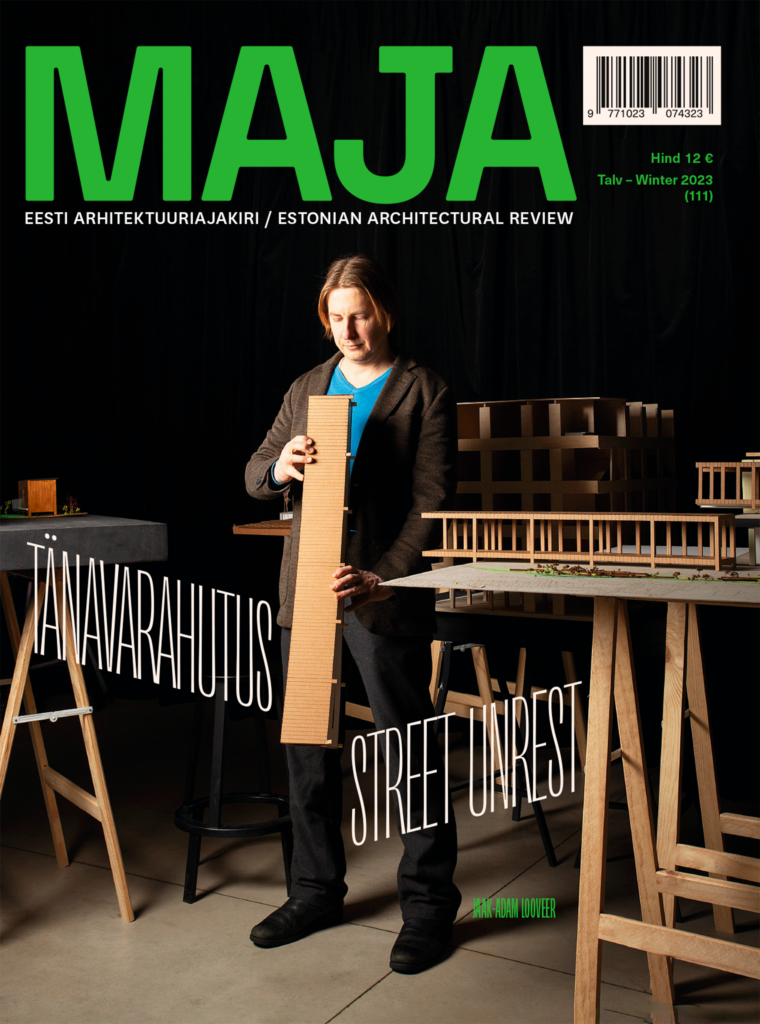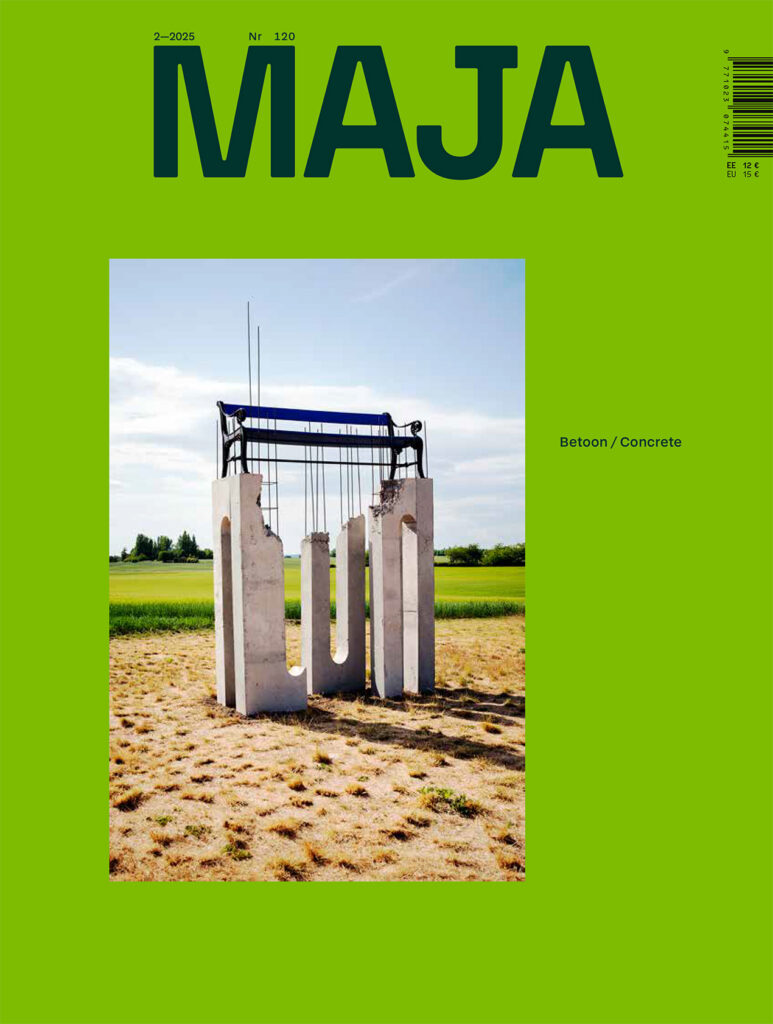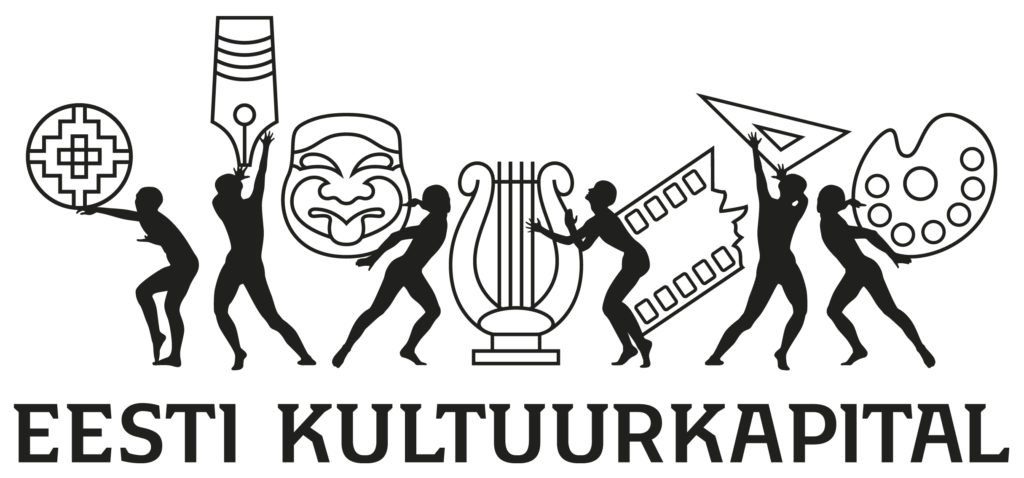Jaak-Adam Looveer. The Art of Creating Spaces with Bureaucratic Means 〉Toomas Paaver
Spatial Development Office as the Key to Good Living 〉Ivo Jaanisoo, Kaja Pae, Veronika Valk-Siska
On Coming to an Agreement, or, How We Still Don’t Have a Spatial Law 〉Indrek Rünkla
Meaningful Spatial Design in the Perplexing Norms 〉Endrik Mänd
Data-driven Parking Norms 〉Tõnis Arjus
The Guideline ‘Healthy Streets in Tartu’ 〉Karin Bachmann
What’s up, Vilnius? 〉Tõnis Savi, Kevin Villem
Tactical Urbanism—Testing Ground for Future Cities in our Backyard 〉Hannes Aava
Why Do We Need Streets? 〉Ave Habakuk
Pollinators and the Highway 〉Paco Ulman
Klindipark From an Animal Ecologist’s Perspective 〉Tuul Sepp
A New Circular Reality 〉Helena Rummo, Elina Liiva
Building Patterns for Pattern Buildings 〉Renee Puusepp
Street Unrest
Essential transformations in Estonian towns over the last decade have revolved around street space. We wish for the street to be not merely a thoroughfare, but also a public space—a place for tarrying at, exchanging ideas, getting together and shaping the society. In the 2010s, the street space revolution was initiated by neighbourhood societies, mostly with some enthusiastic professional spatial designer in the lead. By now, the boldness that originated there to demand that the city should be liveable has become much more prevalent among city-dwellers. This in turn supports the city planners in undertaking bolder steps with the city.
The structure of our common space reflects the society perhaps better than anything else. Speaking of transitions in the society, we can say that the unrest over the streets is like a surface ripple of a certain expression of modernity that is still searching for its spatial form. Speaking of the environmental crisis, sociologists highlight the need for a large-scale social change in order to place socio-technical systems on an ecologically sustainable as well as socially just development path. Sociologist Laur Kanger and historian Johan Schot call it the second great transition after the rise of the industrial society. A similar, albeit perhaps a somewhat shorter step is being taken by the European Union, which has tied the implementation of the Green Deal to the creation of inspiring, sustainable and inclusive living environments. Thus, “street unrest”, the slogan for this issue, is a figure that refers to much wider transitions. Radical changes in common space are not a reverberation of the green transition, but a way for carrying it through.
The city-dweller’s desire for a liveable, healthy city with an underlying sustainable and inclusive society culminated as the focal issue of the 2021 municipal elections. In the same year, spatial design departments were established both in Tallinn and Tartu. The inevitability of creating a spatial development office and developing comprehensive living environments on the national level is increasingly acknowledged. The job of spatial designers working on the municipal or national level is to take a broader view of a city or the whole country, shape the still-developing intuitions of the society, and initiate changes. Those who speak of a second great transition point out that pivotal changes need to involve systems as a whole, i.e., mutually supportive technological, economic, political, cultural and everyday innovations, and this demands a considerably more radical kind of imagination. All of this constitutes the greatest test that public sector spatial designers have faced so far.
In the cities where the development pressure is very high—with thousands of spatial decisions made every year—it is imperative to find like-minded people and share responsibilities. The role of the municipality is also to facilitate good space by involving professional collaborations and experts. Here, much help can be had from architectural competitions that enable to analyse comparable spatial solutions, but also to prototype—try out new formats, emphases, technologies and opportunities, like with the competition for pattern-built kindergartens in Põhja-Tallinn, or the call for ideas for Klindipark. The analysis of parking norms that was carried out in Tartu illustrates that it is namely the public sector architect who has to question the accustomed spatial design practices, which on closer inspection might turn out to be baseless.
Spatial design of a city is not a project with a clear beginning and end, but a continuous process, and a wickedly slow one at that. The public sector architect largely takes the role of the facilitator—their daily job consists in creative work with the means of bureaucracy. In his discussion of the defeat of modernist urban planning, architect and architecture theoretician Pier Vittorio Aureli writes that this only means that we need to fight even more fiercely! This is what a contemporary public sector architect does—by setting bold and powerfully imaginative goals for the society and living environment.
Kaja Pae, Kaidi Põldoja, Ivo Heinrich Arro, Ann Kristiin Entson
This issue was put together in collaboration with the spatial design team of the Tallinn Strategic Management Office.
January, 2023





